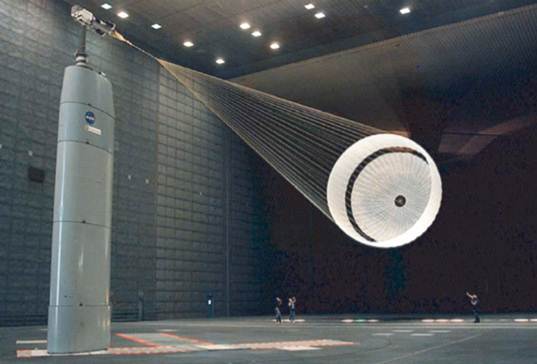Today's Image of the Day shows one of aerodynamics' newest innovations: The NFAC's life-size 80-by-120- foot wind tunnel at NASA's Ames Research Center in Moffett Field, CA.

Driven by six 40-foot-diameter fans, the 80-by-120-foot wind tunnel and the smaller 40-by-80-foot tunnel are going to be the new face of aircraft test programs. Before they were assembled, the Ames Research Center Unitary Plan Wind Tunnel was the only major device to test military jets and space shuttles.
As the largest testing full-scale wind tunnel the world has ever seen, the massive tunnel will be used to test aerodynamics of life-size aircrafts that will be used for the military, commercially, or for outer space research. The 15-blade fans are variable-pitched and powered by a 40-foot pole and a 6,600-V synchronous motor that can spin for two hours at a 25% overload capability. This allows the wind rate to reach up to 300 knots, varying due to the needs of the craft being tested.
The NFAC will also be crucial in the aerodynamics industry to analyze lifting an aircraft under investigation. Acoustic research is also performed using the NFAC to test noise reduction and discoveries. Individual parts can be tested as well and it's normal to see a sole pair of airplane wings being tested against the rapid wind rates.
Currently, the NFAC is managed by the Arnold Engineering Development Center under the U.S. Air Force. NASA has a signed a long-term lease agreement to use the facilities to better their technology and inventions. This discovery will benefit an array of government agencies and companies in the aerodynamics industry including the Department of Defense and NASA.
For more information visit NASA.gov.
Want to learn about more technologies like these? Littelfuse has teamed up with NASA to create an Exploration & Discovery Experience for the engineering community as part of its 2013 Speed2Design program. Winning design engineers will get the opportunity to spend time with NASA engineers at two NASA facilities and learn about the latest in space technology. For more information and to enter, visit speed2design.com.
By Emily Bahr
Advertisement
Learn more about Electronic Products MagazineNasa





